
|
|
|||||||||
|
|||||||||
|
|
||||||||||||||||
|
|
|
||||||||
|
|
|
|
|
|
|
|
|
|
|
|
|
|
|
|
|
|
|
Astrophotographs
|
|
Astronomy Equipment
|
|
Telescope
|
|
Meade 16” Lightbridge Dobsonian Telescope
|
|
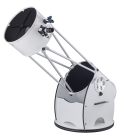
|
|
|
Primary Mirror:
16” (406mm)
|
|
|
Focal Length:
1829mm (72”)
|
|
|
Focal Ratio:
f/4.5
|
|
|
Newtonian Reflector with Dobsonian mount.
|
|
|
Binocular
|
|
Eyepieces
|
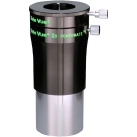
|
|
|
Type:
Powermate (similar to a Barlow)
|
|
|
Barrel Size:
2”
|
|
|
Magnification:
2.0×
|
|
|
Weight:
1.20lbs (19.2oz)
|
|
|
Description Text
|
|
|
Filters
|
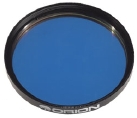
|
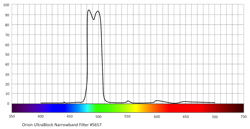
|
|
Description Text
|
|
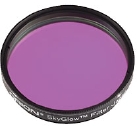
|
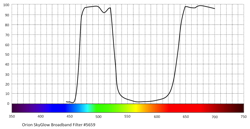
|
|
Description Text
|
|
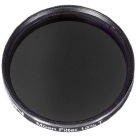
|
|
|
Description Text
|
|
|
Accessories
|
|
JMI Wheeley Bar Dolly for 16” Lightbridge
|
|
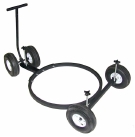
|
|
|
Fantastic!
Well built.
Fits through a standard door.
Makes my 16" Lightbridge "Grab and Go" (at least it's that way around the neighborhood).
See my modifications below that improve a great product.
Wheeley Bars
|
|
|
Argo Navis Digital Telescope Computer
|
|
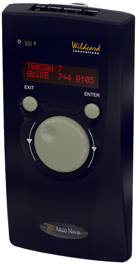
|
|
My default setup |
|
|
Celestron SkyScout Personal Planetarium
|
|
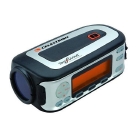
|
|
|
Description Text
|
|
|
Orion SkyLine Green Laser Pointer
|
|

|
|
|
Description Text
|
|
|
Celestron Night Vision LED Flashlight
|
|

|
|
|
Description Text
|
|
|
Starbound Observing Chair
|
|
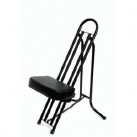
|
|
|
The Starbound Observing Chair is both compact and comfortable.
The seat height range from 9" to 32" height.
With the seat set to maximum height (32"), I have to use a step stool to get into the chair.
With my 16" Lightbridge on the Wheeley Bars, the maximum eyepiece height is 62" (or an altitude of 45°) for my build.
Starbound Observing Chair
|
|
|
Imaginova Starry Night Pro Plus v. 6 Astronomy Program (Macintosh)
|
|
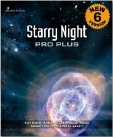
|
|
|
Description Text
|
|
|
AstroZap Light Shroud for 16” Lightbridge
|
|
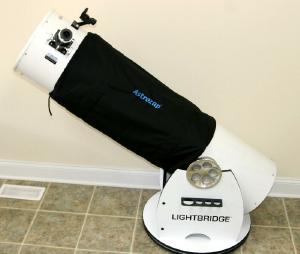
|
|
|
Description Text
|
|
|
Collimation Tools
|
|
Glatter Barlow/Holographic 635nm Laser - 2”
|
|
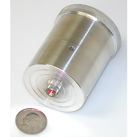
|
|
|
Description Text
|
|
|
Glatter tuBlug - 2”
|
|

|
|
|
Description Text
|
|
|
Glatter Holographic Attachment for Laser Collimator - Square Grid Pattern
|
|
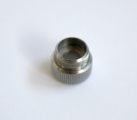
|
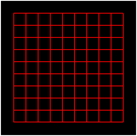
|
|
Description Text
Collimating with a holographic laser
|
|
|
Glatter Holographic Attachment for Laser Collimator - Concentric Circle Pattern
|
|
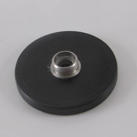
|
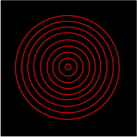
|
|
Description Text
|
|
|
Glatter 1mm Aperture Stop Attachment for Laser Collimator
|
|
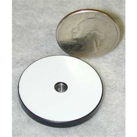
|
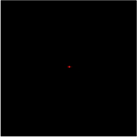
|
|
Description Text
|
|
|
Farpoint Replacement Switch for Glatter Laser Collimator
|
|
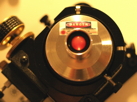
|
|
|
Description Text
|
|
|
CatsEye Teletube XL Sight Tube - 2”
|
|
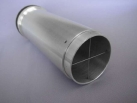
|
|
|
Description Text
|
|
|
CatsEye Blackcat XL Cheshire - 2”
|
|
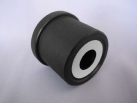
|
|
|
Description Text
|
|
|
CatsEye Infinity XL Autocollimator - 2”
|
|
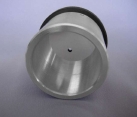
|
|
|
Description Text
|
|
|
Camera
|
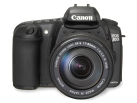
|
|
|
Description Text
|
|
|
Lens
|
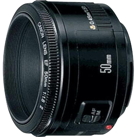
|
|
|
Description Text
|
|
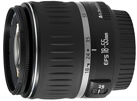
|
|
|
Description Text
|
|
|
Camera Accessories
|
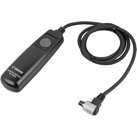
|
|
|
Description Text
|
|
|
SanDisk CF Card Reader
|
|
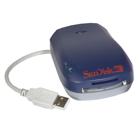
|
|
|
Description Text
|
|

|
|
|
I use the Canopus frame grabber to capture the LCD screen of my Canon 20D camera and display it on my Macintosh.
The Canon 20D has a composite video output with a female 3.5mm jack.
I have a cable that connect the 3.5mm jack to an RCA connector.
The RCA connector connects to the analog video input on the Canopus frame grabber.
The output of the Canopus frame grabber is a digital video signal that is provided to the Macintosh through a FireWire cable.
On the Macintosh, I run QuickTime, which displays the Canon 20D video output on the Macintosh screen.
I can make the QuickTime window as large as my Macintosh screen.
This is useful for both viewing the Canon 20D's menu, as well as previewing shots for focusing and positioning.
ADVC110 High-Quality, Bidirectional A/D Conversion
I have also used the Canopus frame grabber to display and record video from an analog video camera attached to the Lightbridge focuser. |
|
|
Aluminum Case for Scope Accessories
|
|
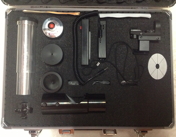
|
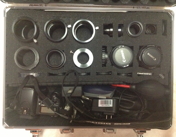
|
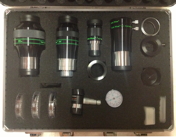
|
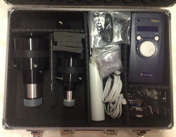
|
|
These cases are easy to configure.
They are great for transporting accessories around town.
I would NOT use these cases to ship delicate accessories via an airline.
Quantaray Aluminum Cases
Ritz Camera (or Wolf Camera here in Atlanta) no longer carries the Quantaray (QAL-1318) cases. It appears that the same case is also called an Ape Case ACHC5600 Jumbo Aluminum Hard Case (Grey/Black). The new version of the cases has bright yellow foam interior, otherwise they look the same. The second link below is to the Ape cases on Amazon. ACHC5600 Internal Dimensions: 17-⅝" L × 12-¼" W × 6-¼" H ACHC5600 External Dimensions: 18-⅛" L × 12-¾" W × 6-¾" H Ape Aluminum Cases |
|
|
Modifications
|
|
Bob's Knobs for 16” Lightbridge Secondary Mirror
|
|
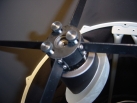
|
|
|
On the 16” Lightbridge, Meade includes collimation and mirror locking knobs on the primary.
However, the secondary tilt screws are Phillips head.
I have also seen Allen wrench heads on some Lightbridges.
It is too easy to drop an Allen wrench or a Phillips screwdriver.
And Murphy's law, it's going to land right on the primary mirror.
In addition, you can forget to bring a tool to a remote location.
The best solution is to replace the screws with Bob's Knobs.
Very easy installation.
Bob's Knobs
|
|
Secondary Mirror Mount Modifications
|
|
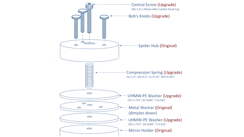
|
|
|
I really didn't like the way the collimation knobs adjusted the secondary mirror.
I could barely touch one of the knobs and the laser dot would jump a couple of inches.
I tried making and using the milk jug washers.
It had some improvement.
Opticsmart UHMW-PE Secondary Mirror Washers
I think I've finally found a combination of things that, added together, seem to be an improvement. First, of course, is to replace the collimation screws with knobs (like Bob's Knobs). Second, Opticsmart has UHMW-PE (ultra-high-molecular-weight polyethylene) Secondary Mirror Washers. Look up "ultra-high-molecular-weight polyethylene" on Wikipedia for a good description of this material. The washers are the same size as the metal washer that Meade supplies with the 16” Lightbridge. The UHMW-PE washers are black in color. I sandwiched the two UHMW-PE washers around the Meade metal washer. Third, I replaced the spring with a stronger spring. The spring Meade includes has an open length of about ¾” and an outer diameter of about ½”. I replaced the spring with one that has an open length of 1”. The closed length of the spring is about ¼” and most of it fits into the recessed hole on the back of the spider hub. Fourth, I replaced the central screw with a M6-1.0 30mm Allen socket head cap screw. This doesn't help the collimation adjustment, but if I drop something on the primary mirror, I had rather it be an small Allen key then a Phillips screwdriver. |
|
Farpoint Knobs and Springs for 16” Lightbridge Primary Mirror
|
||
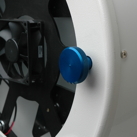
|
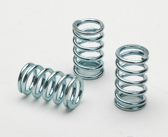
|
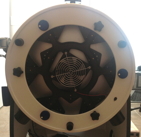
|
|
The 16” Lightbridge primary mirror springs are not very strong.
Farpoint Astronomics has a very nice knob and spring kit.
The stronger springs (which are larger) require collimation knobs that have longer screws.
The longer knob screws push the mirror up in the OTA just enough where the locking knobs no longer work.
I like using the locking knobs.
I hope Farpoint comes out with a set of locking knobs with a screw long enough to reach the mirror cell.
They should be a different color (like red).
As a temporary fix, I replaced the white locking knobs with the old black collimation knobs.
They are working for now, but they need to be about a ¼" longer.
Farpoint Astronomical Research
I also marked the position on the Farpoint knobs with a white dot. The helps me remember the knob's position in case I have to turn it back. |
||
|
Handle to Change Lightbridge Altitude and Azimuth
|
||

|
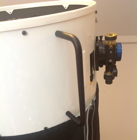
|
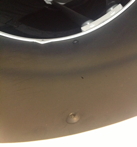
|
|
Before I installed a black shroud over the truss tubes, when I needed to reposition the scope, I would just grab a truss tube.
After the shroud, I found myself grabbing the focuser, eyepiece, or camera to move the scope.
This almost always resulted in putting the scope out of focus.
Finally, I got smart and mounted a handle.
The handle I used was from Reid Supply Company and is available on Amazon.
The specs are below …
Amazon.com (Reid Supply Company)
½” dia. × 3” × 8” Long. ¼-20 thd's. Black Anodized Finish, Aluminum Round - Pull Handle I wanted a largest handle I could fit on the UTA. There are many different sizes of this handle. The negative of this handle was that I had to drill two holes in the UTA. The handle is mounted with two ¼-20 by ½” screws. I used button head Allen screws. |
||
|
Oregon Rule Co. Dials for Altitude and Azimuth
|
||
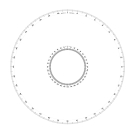
|
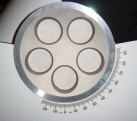
|
|
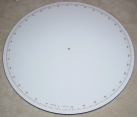
|
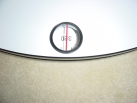
|
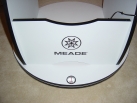
|
|
Professional looking digital setting circles can be obtained from Oregon Rule Company (see link below).
The azimuth setting circle is a 30” O.D. and 28” I.D. circle.
The numbers are from 0° to 360° in a clockwise direction.
The Altitude is an 11” O.D. and 9” I.D. circle.
The numbers go from 0° to 180°, then from 180° back to 0°.
I cut the circle from 15° to 95°, since this is more than enough range.
Oregon Rule Company Dials
|
||
|
Teflon Bearings for Altitude and Azimuth
|
||

|
||

|
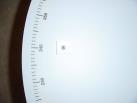
|
|
|
Description Text
ScopeStuff
|
||
|
JMI Wheeley Bar Leveling Screws Modification
|
|

|
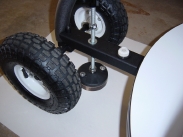
|
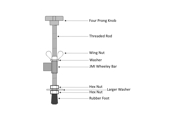
|
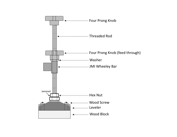
|
|
There are three leveling bolts on the JMI Wheeley Bar.
Each of these bolts are terminated with a nut, large washer, another nut, and a rubber end cap.
The problem is that when the Wheeley Bar is off road, the rubber end cap can sink into soft ground.
I've actually lost one by not realizing that the end cap was buried in the mud.
Solus Levelers
I replaced the rubber end cap with an adjustable leveler from a company called Solus (link below). The part number I used was VG-511B-02-S12. This leveler is 4” in diameter. It contains a ½”-13 socket that the leveler bolt screws into. The rubber end cap has a surface area of 0.8 square inches. The Solus leveler has a surface area of about 12.5 square inches. The weight of the Lightbridge, the Wheeler Bar, and accessories is about 180 pounds. That means that each leveling bolt has to support about 60 pounds. The rubber end cap has about 75 pounds per square inch distributed. The Solus leveler distributes about 5 pounds per square inch. To keep dirt off the end of leveler, I attached a round (4.25” by 1” thick) piece of wood to the leveler (using screws through the lag bolt holes). When needed, this wood can be easily replaced. The socket in the leveler is in a ball joint that tilts ±15°. This works great for leveling on an uneven surface. I would recommend a couple of drops of oil (like Singer sewing machine oil) on the ball joint before use. The wing nut can also be upgraded to a four prong knob (DimcoGray #2-290-303). |
|
|
Bubble Level and SpeedDial for JMI Wheeley Bar
|
||

|
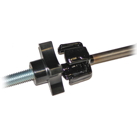
|
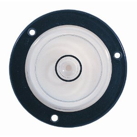
|
|
The JMI SpeedDial fits into any AC powered or cordless drill.
Its purpose is to accomplish quick leveling of the JMI Wheeley Bars.
Place the claws of the adapter over the leveling screw four prong knob.
Turn the drill on forward or reverse to achieve proper leveling.
JMI SpeedDial
To check if the Wheeley Bar is level, I have place a bubble level 3-½" behind the front leveling screw. The level is held in place on the front axel arm with double stick foam tape. The bubble level's diameter is 1¾" (Starrett Model # BE-1). Starrett Bubble Level (Bull's Eye) |
||
|
T Handle Ball Lock Pin on Tow Handle of JMI Wheeley Bar
|
||
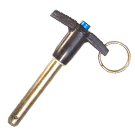
|

|
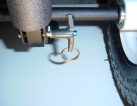
|
|
I have a JMI Wheeley Bar dolly for my 16" Lightbridge.
I'm always tripping over the handle.
JMI recommends removing the handle while observing.
The problem is that the handle is held on by a Clevis pin and hitch pin clip.
Both are easy to lose.
Both are difficult to put back on in the dark.
I think I have found a better solution.
I replaced the Clevis pin and hitch pin clip with a "T Handle Ball Lock Pin".
I ordered this from Carr Lane.
Their part number is #CL-4-BLPT-1.25.
This is one piece, no hitch pin to lose.
Just push the blue button and remove the pin.
The T Handle comes with a ring.
This allows the T Handle to be attached to the Wheeley Bar with a small (short) lanyard.
Carr Lane
|
||
|
ScopeStuff Counterweight System for 16” Lightbridge
|
||
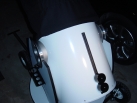
|
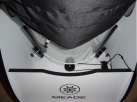
|
|
|
The sum of all torques is equal to zero.
Each torque is equal to the distance (center of gravity) from the fulcrum of each component multiplied by its weight.
This means that torques on one side of the fulcrum are assumed to be negative, the other side positive.
Stated another way, torques on one side of the fulcrum need to equal torques on the other side to be balanced.
ScopeStuff Counterweight System
On the 16” Lightbridge, the eyepiece is 45” from the fulcrum. The rear of the OTA is about 15” from the fulcrum. This means the any weight at the eyepiece has a 3 to 1 mechanical advantage over any weight added to the rear. If you have a two-pound eyepiece, you need six pounds at the rear to achieve the same balance as no eyepiece. If you use heavy eyepieces, I would recommend buying several extra weights for the ScopeStuff system. I use three of the ScopeStuff rails placed around the rear OTA. One is placed on the top of tube. The other two on the bottom. The rails are placed at about 120° apart. The two bottom rails a placed to fit into the corners of the base assembly (when the scope is at zenith) to prevent mechanical interference. I have six one-pound weights and six two pound weights. This balances six pounds of eyepieces with 18 pounds of weights. |
||
|
Argo Navis Computer System and Encoder
|
||
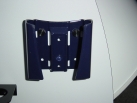
|
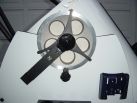
|
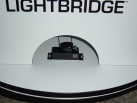
|

|
||
|
After checking out a number of digital setting circles, I decided to go with the Argo Navis system.
It took less than an hour to install and setup.
I was using the system the first night.
Argo Navis - Wildcard Innovations
|
||
|
This is a download of four files that (when loaded into Starry Night) highlights the Alignment Stars for Argo Navis.
Download ReadMe text fileDownload Text Description used by Starry Night Download Source for Starry Night Alignment Stars Download compiled version of Starry Night Alignment Stars |
||
|
Wiring Encoders
|
||
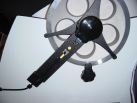
|
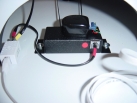
|
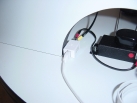
|
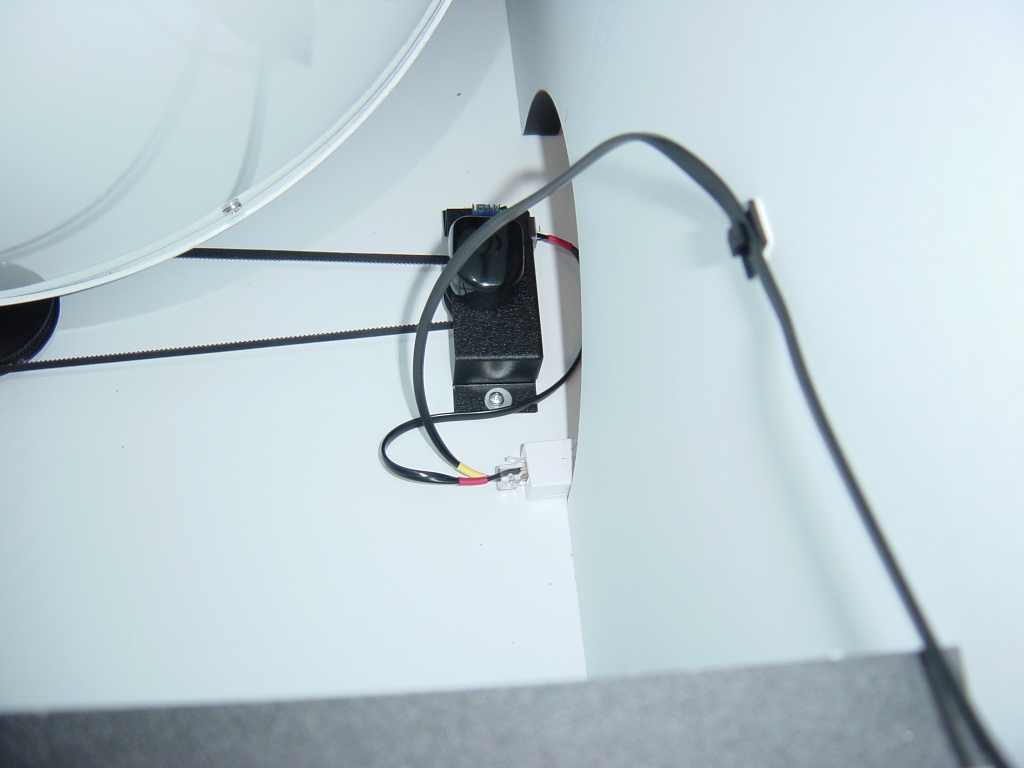
|
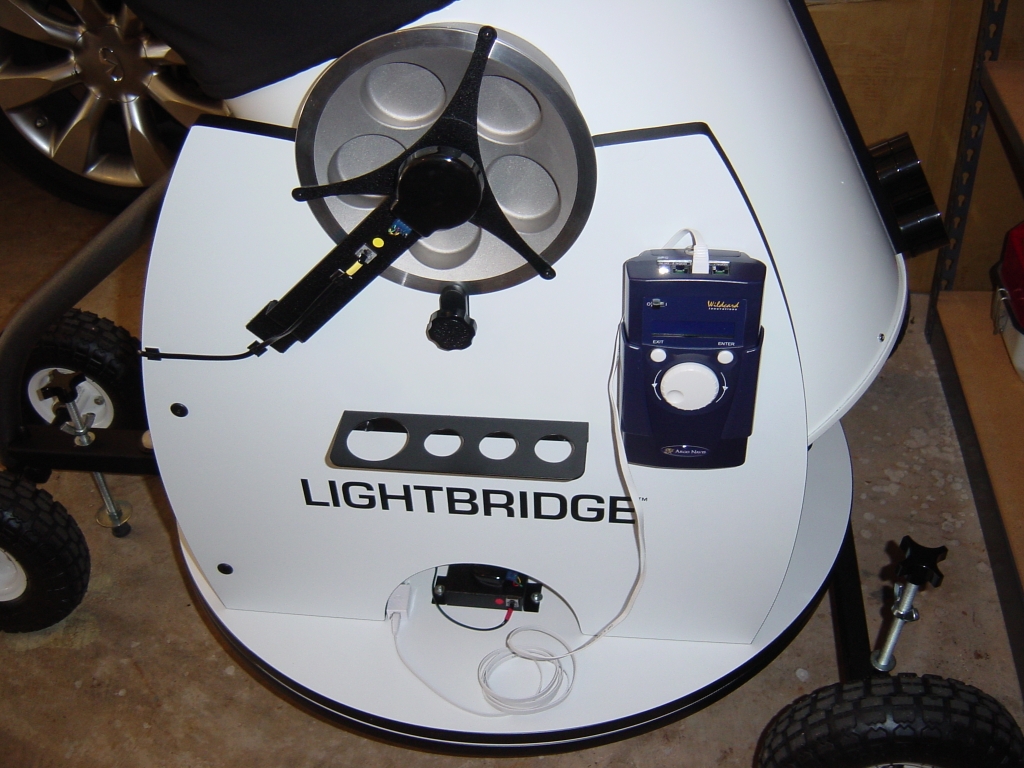
|
|
|
Marked the Altitude encoder with a yellow dot.
Labeled the altitude encoder cable with yellow heat shrink.
Marked the Azimuth encoder with a red dot.
Labeled the Azimuth encoder cable with red heat shrink.
Shortened cables to correct lengths by replacing RJ-11 connectors.
Connected an RJ-45 coupler (F/F) to cable assembly.
Coupler was secured to base with double stick mounting tape.
Connected Argo Navis computer with a straight through Ethernet cable.
I preferred a 7 foot SuperFlat Cat6 Ethernet patch cable made by Cables Unlimited.
I choose a white cable to make it easier to see in the dark.
Cables Unlimited part # UTP-1800-07W.
Cables Unlimited
|
||
|
Keyspan Computer Serial Port Interface
|
|
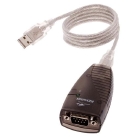
|
|
|
The Keyspan Serial Port Interface is an easy way to connect a serial device to a USB port on your computer.
I use it to connect my Macintosh computer to the Argo Navis.
I have several Keyspans and they all work right out of the package and perform flawlessly.
In no time, Starry Night Pro Plus planetarium software on the Mac and the Argo Navis were working together.
I did have to have a 9-pin D-shell to RJ-11 cable.
Keyspan Computer Serial Port Interface
|
|
JMI Event Horizon (EV-1nM) Focuser
|
|
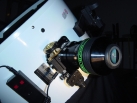
|
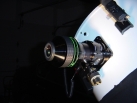
|
|
Direct replacement for the version shipped with 16” Lightbridge.
No drilling required.
The advantages are: motorized focus control (reduces motion at high magnifications),
less play between eyepiece, drawtube, and/or 1.25” adaptor,
reduced backlash (especially when using heavy eyepieces),
lighted indicator to aid in setting focus when changing eyepieces.
JMI Telescopes
The JMI focuser used has the following options: EV.BODY - Standard Modular Body (Option B) EV.BASN - Newtonian Base (Option N) EV.DT46 - 4.6” Length Drawtube (Option 46) EV.DRVD - Dual Speed with Drive Indicator (Option D) EV.PUSH - Pusher Bearing (Option P) EV.KNBR - Rubber-Gripped Gold Knobs (Option R) EV.MTR - Motor Control (Option M) EV.A2-1.25 - First Output Adapter, 1.25” Eyepiece (Option E) EVUPGLED - Illumination Dial Upgrade (Option I) |
|
|
Labeling Truss Tubes
|
|
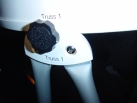
|
|
|
Used a label maker to label truss tubes.
Can't swear that it helps collimation, but it does help in reassembly.
|
|
Using Heat Shrink Tubing to Cover Truss Tubes
|
||
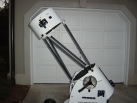
|
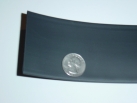
|
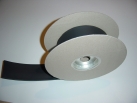
|
|
Instead of painting the truss tubes black or slipping on thick pipe insulation, I decided to use heat shrink tubing (HST).
The tubing is 2 to 1 standard wall polyolefin HST.
It is flat black in color.
The nominal I.D. is 1-½” tubing.
After shrinking, the I.D. is ¾”.
This makes a nice tight fit for the 1” truss tubes.
The HST is shrunk with a heat gun.
It is available from the link below in a 50' spool.
Each truss tube requires an 32” long piece of HST.
BuyHeatShrink.com
|
||
|
Primary Mirror Center Spot
|
||
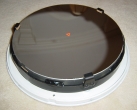
|
||
|
To use the CatsEye collimation tools, it's best to remove the old center spot and replace it with a CatsEye spot.
This turned out to be a good thing, since the original center spot was off about 3mm.
Installation was easy, I just followed CatsEye's instructions.
I'm using the red triangle.
The CatsEye spots are also more reflective than the original, making colimation eaiser with my laser.
CatsEye Collimation
|
||
|
Laptop Arm
|
||
|
|
||
|
Astrophotography Attachments
|
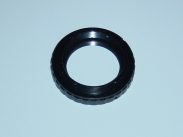
|
T-Ring Adapter for Canon
|
|
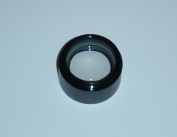
|
2” Telenegative Lens (1.6×)
|
|
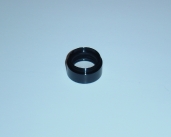
|
1.25” Telenegative Lens (1.6×)
|
|
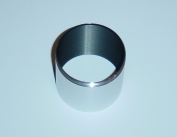
|
2” Tube Extension
|
|
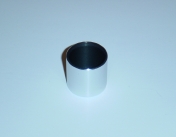
|
1.25” Tube Extension
|
|
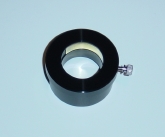
|
1.25” Eyepiece Adapter
|
|
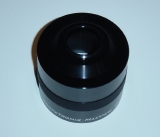
|
2” MaxView II Upper Housing
|
|
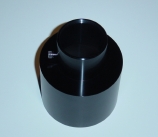
|
2” MaxView II Lower Housing
|
|
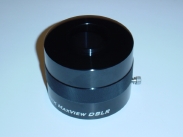
|
1.25” MaxView Upper Housing
|
|
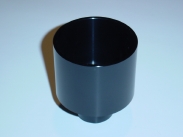
|
1.25” MaxView Lower Housing
|
|
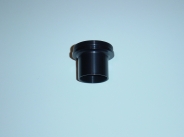
|
T to 1.25” Port Adapter
|
|
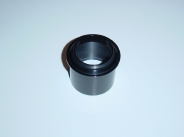
|
T to 2” Port Adapter
|
|
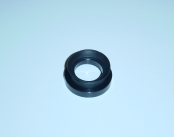
|
T-Threaded Eyeguard
|
|
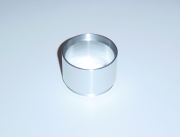
|
Televue 2” Eyepiece Barrel Extender (EBX-2120)
|
|
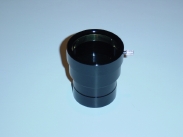
|
Small 2” Eyepiece Extension (1.5” Long)
|
|
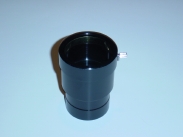
|
Medium 2” Eyepiece Extension (2” Long)
|
|
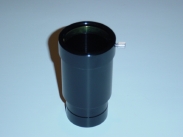
|
Large 2” Eyepiece Extension (3” Long)
|
|
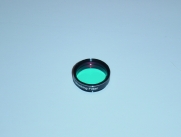
|
IR Blocking Filter
|
|
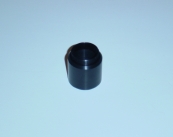
|
C Mount to 1.25” Port
|
|
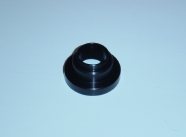
|
C Mount to T Mount Adapter
|
|
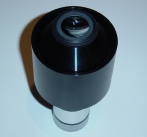
|
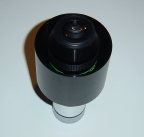
|
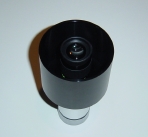
|
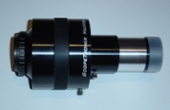
|
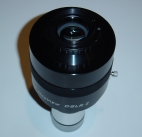
|
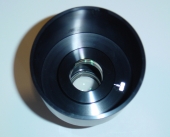
|
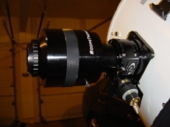
|
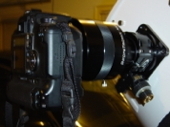
|
|
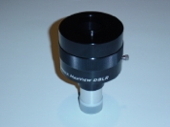
|
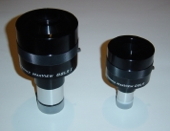
|
|
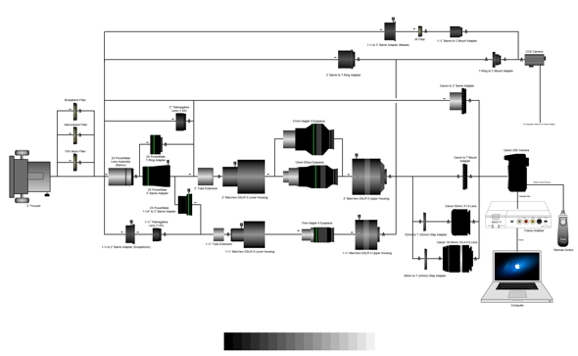
|
||

|
||
|
This is an 18 step grayscale wedge from an [R, G, B] of [00, 00, 00] to [FF, FF, FF] in increments of [10, 10, 10] steps.
For best viewing of images, you should adjust your screen brightness and contrast to be able to see the changes of all 18 shades of gray.
|
||

|
||
|
This is a color channels palette. There are three [R, G, B] channels displayed, plus black [00, 00, 00].
The three colors are red [FF, 00, 00], green [00, FF, 00], and blue [00, 00, FF].
White [FF, FF, FF] is displayed as the color between the boxes.
|
||
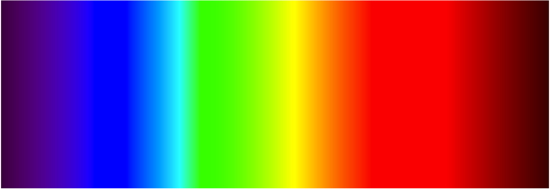
|
||
|
This is a color spectrum. It is the visible light spectrum from 350nm to 750nm.
|
||
|
Text Description
|
||
|
Astronomy Software (OS X)
|
|
Planetarium Software
|
|
|
Astrophotography
|
|
|
|
|
|
|
|
|
Digital Setting Circles
|
|
Astronomy Magazines
|
|
Other Interesting Links
|
|
Equipment Links
|
|
Astronomy User Groups
|
|
(Membership Required)
|
|
|
Subscribe to:
Meade_LightBridge_Telescopes
|
|
|
(Membership Required)
|
|
(Membership Required)
|
|
|
Subscribe to:
argo_navis_dtc
|
|
|
(Membership Required)
|
|
|
Subscribe to:
StarryNight
|
|
|
Astronomy Books
|
|
Astronomy Manuals
|
|
These are password protected and are for my own use.
|
|
Observing Messier's Objects
|
|
|
|
|
|
|
|
|
|
|
|
|
|
This product is printed with 100% recycled electrons. |